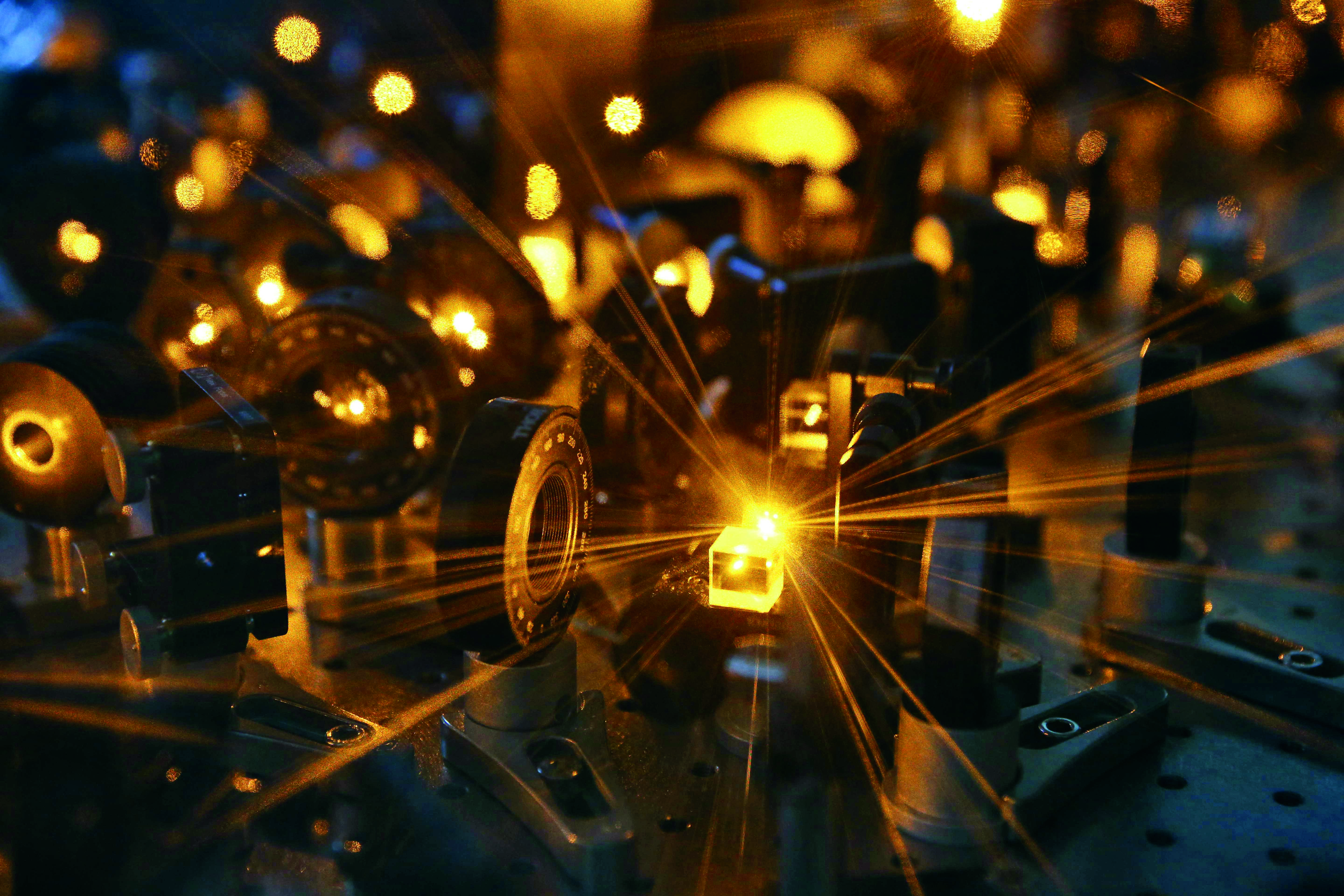Birth of China’s Quantum Computer

The notion of a quantum computer is already well-worn territory in science-fiction literature and movies, and reality is finally catching up.
On May 3, 2017, in Shanghai, the Center for Excellence in Quantum Information and Quantum Physics under the Chinese Academy of Sciences (CAS) announced that China had constructed the world’s first quantum computer based on single photons that goes beyond the early classical computer, a development that could turn traditional computing upside down.
Professor Pan Jianwei, a renowned Chinese physicist and a CAS academician, led the project. “The things we may one day be able to do with quantum computing are beyond our imagination,” he says. “China is getting closer to the critical shift from quantitative change to qualitative change in its quantum computing research.”
Beating the Most Powerful Supercomputer
What exactly is a quantum computer?
In physics, a quantum is the minimum amount of any physical entity to be involved in an interaction. All microscopic particles, including molecule, atom, electron and photon, emit different forms of quantum. From CD players to massive fiber-optic communication systems, magnetic resonance imaging machines in hospitals and scanning tunneling microscopes, quantum technology has gradually penetrated every aspect of daily life.
An early classical computer has memory made of bits defined as either a one or a zero. However, a quantum computer is a computation system that makes direct use of quantum-mechanical phenomena to perform operations on data, which is much faster. For example, factorizing a 300-digit number, a task that would take an early classical computer 150,000 years, can be accomplished by a quantum computer in one second.
“China’s current quantum computer model uses ten qubits,” reveals Pan. “However, with 50 qubits, it could beat the fastest supercomputer in terms of processing some specific problems.” He compares today’s quantum computers with early classical computers because “our quantum computer is only a ‘kid’, so it’s only fair to compare it to other kids.” Pan’s team plans to build a model with 20 qubits by the end of 2017, and its computing capacity is expected to surpass that of the fastest laptop on the market.
Nobel-Ready Chinese Scientist
Pan, a leading Chinese quantum physicist, is clearly a key figure in the country’s quantum computer project.
Pan is a science legend in the eyes of many. At 29, he co-authored an article about quantum teleportation that was selected by the international academic journal Nature as one of 21 classic papers for physics over the past century alongside the discovery of the X-ray by Wilhelm Roentgen (1845-1923) and the development of the Theory of Relativity by Albert Einstein (1879-1955). At 31, he was appointed professor at the Hefei-based University of Science and Technology of China (USTC). At 41, he was elected a CAS academician, the youngest academician in China at that time. At 45, he won the first prize of National Natural Science Awards, China’s highest science award which has been granted to top scientists including Hua Luogeng, Wu Wenjun, and Qian Xuesen. Some even think Pan came close to winning the Nobel Prize ten years ago.
In the field of superconducting quantum computation, China has no first mover advantage and lacks professionals. Concerned about this situation, Pan sent students with diverse academic backgrounds to study in Austria, Germany, Switzerland, the United Kingdom and the United States and later “brought” them back. This ensured that his team had the most advanced knowledge in specialties such as cold atoms, precision measurement and multiphoton entanglement manipulation. In recent years, the team’s research has been published in many renowned international periodicals including Nature and Science.